So, it’s launch is not far off now but I’ve just had the chance to do a pre-production review of the new Nikon D800 (much in the same style as my pp D4 review) to see if this 36mp beast is as good as some would say, or bad as others would! One things for sure, it’s arguably the most anticipated camera in Nikon’s recent line up!
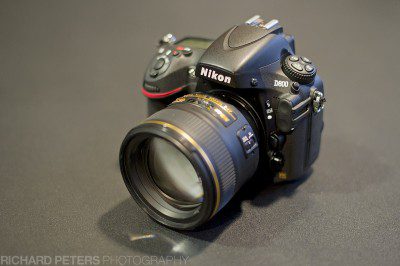
The Nikon D800 with 85mm 1.4 AFS
Bare in mind, much like my recent D4 (p)review, this was arranged by Wex Photographic (formerly Warehouse Express) and was also with a pre-production model. So I was unable to take any images away with me. Also, due to the unfortunate recent robbery Nikon suffered, they didn’t have an D800E or the MB-D12 battery grip for me to look at. In fact, if you went to Focus On Imaging, this sample unit I played with is the exact same one you’ll have touched at the show as it’s the only one they have at the time or writing!
MY THOUGHTS BEFORE I TESTED THE D800
I guess because I’m a wildlife shooter, the idea of 36mp hasn’t really grabbed me and I’ve been in two minds about if I liked the idea of it or not. There is an awful lot of resolution here in a slower, smaller body and also with those tightly packed pixels comes worse noise control. So you’ll understand why I’ve not really kept up too much with all the discussion online and focused my interest on the D4 instead.
But, with open mind I headed off to Nikon HQ as curiosity was still there.
COMPARING THE D800 TO…EVERYTHING?!
The D800 has a hard job, it’s going to be compared to the D4, because they are both new, the D3x because it’s got more resolution, the D700 because some thought it was it’s replacement (which it’s not) and the D7000 because the pixel density is close. That’s a lot of comparisons!
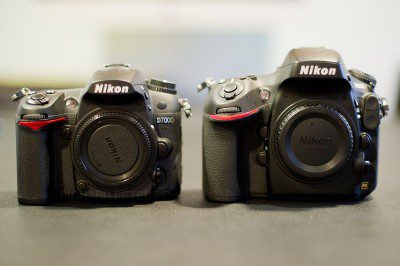
The Nikon D800 lined up against the D7000
As far as the D4 goes, they share the exact same focusing system and 91k metering and the same new larger rear LCD. But all that data to process for it’s huge images comes at a price, and that price is the D800 buffer, which will handle roughly 12 RAW and 25 jpeg (with a Sandisk Extreme 60mb/s card). And when you start to zoom in on those huge files on the rear LCD you really start to appreciate just how much information is in them, when objects you can barely see start to fill the whole screen. EDIT: It’s been pointed out the manual for the D800 confirms the buffer can allow up to 25 RAW images depending on compression and 12 or 14-bit settings. The pre-produciton model I was using certainly only allowed 12 though (as indicated by shots remaining when half depressing the shutter release). Great news that the buffer is LARGER than I first thought!
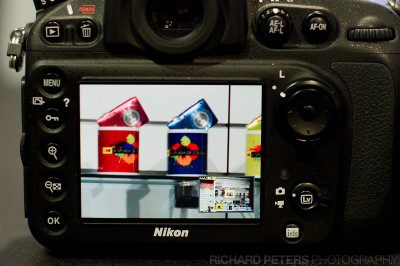
36mp means you can zoom a long way, further than this
But remember, they are two entirely different products aimed mostly at different types of shooting styles. This is not like the D3 v D700 situation and this is not the D700 replacement many thought it would be. The D800 is effectively in a whole new category of it’s own.
(But whilst I’m on the subject of comparisons, I expect the D800 will also see the complete death of the D3x)
D800 HIGH ISO, BETTER THAN THE D700
Despite the fact the D800 is not the replacement for the D700, it’s inevitable that the high ISO noise comparison will be made, after all they have similar native ranges. 100-6400 for the D800 compared to 200-6400 on the D700.
Obviously, my brief experience with the D800 at Nikon HQ shooting in a room with a lot of artificial light and only being able to view the images on the LCD, isn’t going to be the most scientific of tests! But it went a little something like this:
My Nikon contact Julian kindly went to get me a cup of tea so I set about taking some images of the room I was sat in. Depending on what I was aiming the camera at I was getting various exposures, with one in particular at 1/160, f3.5, ISO 3200 taken with the 85m 1.4 AFS. I set about zooming in on the image, of which you can zoom a LONG way with 36mp, and I was shocked to discover no noise. Not even in the black of a Nikon D4 brochure. Nothing. That can’t be right, it can’t be this clean can it!? I delved in to the settings and discovered what was going on, noise reduction was set to high! That explained it. I switched NR off completely and retook the same shot, with the same settings. This time zooming in on the image resulted in me being just as impressed than before! Of course, this time there was noise in the image, but it was very pleasing and well controlled, much like fine grain and free from ugly blotches of chroma noise. Like I said, you have to take this with a pinch of salt because it’s not an accurate test, however it is a very good start. When Julian returned (tea in hand), and I explained my surprise at how well the camera was handling the noise, he promptly (and proudly) told me the D800 has better high ISO ability than the D700 (and, as it shared the same sensor, safe to say the D3 as well). That explained that then! I’d not read up much on the ISO or even seen any decent test images, so it was certainly a welcome surprise!
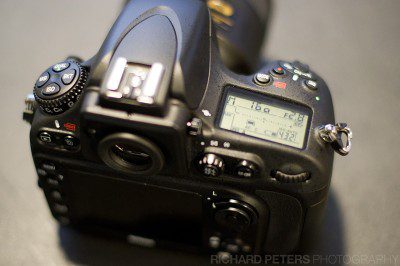
The Nikon D800
But let’s just think about that some more…the D800 has better high ISO noise than a camera that, not that long ago, was the best camera in the world for high ISO, but now we have it with 3x the amount of pixels. That’s just incredible and no matter how against ultra high resolution you are, you can’t not be impressed by that!
D800 or D800E, WHICH ONE TO GO FOR?
Of course, we all know the D800 has another trick up it’s sleeve, in that it comes in two flavours, the regular D800 and the AA filter removed (well, redesigned, not removed) D800E.
I’ll argue that if you don’t know which one is best suited to your type of photography, what an AA filter does or what can cause moire in a photo, then the regular D800 is the one to go for (that’s not me being condescending, it’s just common sense). This is backed up I feel by Nikons decision to only allow selected retailers sell the D800E. And of those selected retailers, at least one member of staff needs to be trained by Nikon on how to handle moire, the possibility of getting it and how to shoot to avoid or reduce it, not just at the time of taking the shot but also with processing. This is good thinking, because there will be an awful lot of shooters out there that simply won’t know any of this. That’s not to say people are lazy or uneducated, it’s just that as all other camera’s with the AA filter reduce this issue without anyone ever having to worry, it’s not necessarily a problem that is encountered very often. But potentially that won’t be the case with the D800E. So limiting the ability to only being able to buy the camera from someone who can fully explain the potential negatives of the ‘E’, and how to work round them, will absolutely help customers make an informed choice on which version to get, without them feeling disappointed further down the line.
WANT TO KNOW MORE?
Well, you’ll just have to head over to my full pre-production review on the Wex blog. As this hands on was arranged by them for me to write up a review for them, the only place you can read it in full is on their blog. So head over there now to read more in depth thoughts and specification highlights on the areas covered here, as well as more that are not, plus my overall feeling towards the D800 now I’ve experienced it, albeit not in real shooting conditions. Read my full D800 write up on the Wex Blog.
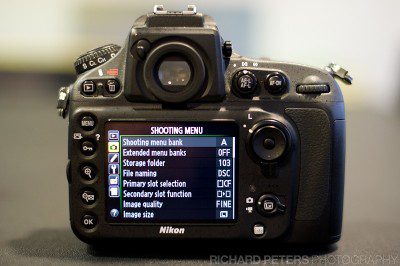
D800 features the same rear LCD as the D4








